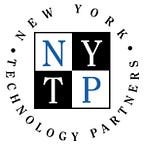Improving Speed and Efficiency in the Hiring Process
The hiring market is still highly competitive, and restless jobseekers often have plenty of options to choose from, making a quick and efficient hiring process all the more important.
Introduction
In a still ever-competitive hiring market, workers continue to hold an advantage over employees in bargaining power during the job application process. In other words, it’s still a job-seeker’s market for the time being, as many job-seekers typically have several companies to choose from, in addition to rising wages across several fields. According to the US Bureau of Labor Statistics, the median amount of time spent unemployed by Americans in May 2022 was 9.6 weeks (roughly 2 ¼ months), which is a 50.3% decrease from May of 2021, when the median time of unemployment was 19.3 weeks (just under 4 ½ months). Consequently, jobseekers instinctively expect the hiring process to move quickly as they go through applications and interviews.
Be Specific, But not Unreasonably so in Job Descriptions
Due to the mass availability of online job applications, it is far easier for jobseekers to apply to many different job postings in a short amount of time than in the past, when paging through newspaper classifieds and placing calls and/or preparing letters was the norm. Due to the speed and relative ease afforded by job applications, many job-seekers will take a “spray and pray” approach towards online applications — rapidly applying to a wide number of jobs they see to be at least vaguely like Work that they’ve done in the past, or work that they’d like to do in the future. This strategy often comes to their own detriment, and as a hindrance to companies who must sift through a formidable stack of applications, many of which may not have relevancy for what the company was seeking to hire for.
Considering this, some companies will write highly descriptive job descriptions that provides an overview of what skills and core competencies they are seeking for as a means of filtering out irrelevant candidates, as jobseekers will hopefully have a better understanding of the specific skills being sought after before applying. This much being said, companies can also run into the opposite problem when their job descriptions become unreasonably descriptive, making it difficult to find anyone who would feasibly meet all the stated criteria, due to the sheer quantity of skills being sought. As is the case in several factors of effective recruiting, balance is key. Providing a job description that is adequately illustrative of the roles and responsibilities needed and expected for the organization, while also not being overly explicit in granular details to the point of excluding workers who could quite competently carry out job duties, is a key balance to strike.
If Possible, Reduce the Number of Rounds of Interviews
According to Career Sidekick, the average jobseeker can expect 2–3 rounds of interviews; however, these values could be less or more, depending on the industry and level of a role that a company is seeking to fill. While job interviews fill the critical role of ensuring that a potential hire meets the abilities and temperament searched for by an organization, there are instances when all too many interviews bog down the hiring process and discourage potential hires. Moreover, given the competitiveness of the current job market, there is a high likelihood that jobseekers are interviewing with multiple companies simultaneously, especially for jobseekers with more marketable skills. If the number of interviews is too many and/or if the gap between interviews is too long, companies risk losing quality candidates to other competing job offers.
Among the most effective ways to avoid delays and bottlenecks within the interviewing process is to develop a structured plan for the stage(s) of interview(s) that your organization intends to have in place during the recruitment phase and what specific characteristics or skills will be required from interviewees to qualify to the next round(s). Additionally, it is a common practice for hiring managers to make a backlist of backup candidates who were not their top picks, in case if their main pick doesn’t come through. While this tactic does have some benefits, it is also worth considering the potential risk if your other top picks become impatient and withdraw from the application process, and/or accept offers from competitors in the time in-between administrative actions and waiting on a decision from your top choice candidate (if it’s taking an unusually long-time to hear back from them).
Consider Rethinking Your Recruitment Process
Due to concerns about culture fit, retention, and the upfront costs associated with onboarding; many companies are (somewhat understandably) hesitant with choosing new hires, though being overly picky and waiting for the ideal “purple squirrel” candidate with all the traits that a hiring manager could ever ask for can be expensive in of itself, due to the time required to vet candidates and a lack of labor from an unfilled position. One potential solution to this is to consider implementing a temp-to-hire strategy, which allows companies to “try out” and see if a worker is a good mutual fit for the organization. Temp-to-hire programs typically last for three to six months, after which companies can decide whether they would like to hire them as a regular employee moving forward.
Recruiting firms can additionally assist companies with their traditional hiring efforts using their established expertise and network of potential candidates. One such recruitment firm — New York Technology Partners specializes in locating qualified potential hires within the STEM, IT, and Skilled Trades professions. If your organization is interested in putting the experienced recruiters at NYTP to task to engage a swift hiring process, give us a call at (585) 300–4720 from 9 a.m. to 5 p.m. EST, Monday through Friday, or visit our website to learn more.
